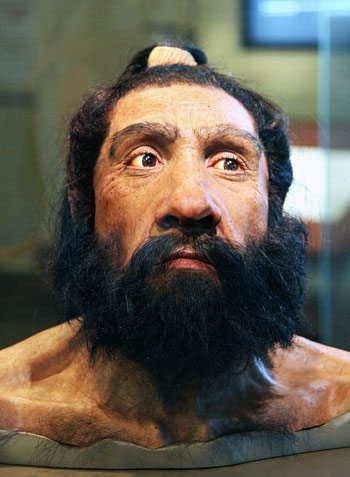If Type 2 diabetes forces you to keep an eye on your blood sugar, or if your immune system is particularly good at fighting off illnesses, you might be able to blame an ancestor’s ancient fling with a Neanderthal.
Advances in technology mean scientists can now use ancient bones and teeth to string together the DNA from the modern human’s long-lost relative who roamed the earth thousands of years ago.
“We actually managed to extract DNA from Neanderthal bones. We have complete genomes from a Neanderthal from Siberia,” said Dr. Bence Viola.
“So we can actually study, very much in detail, its genetic information and we can look if we see areas of this genome that show up in certain modern humans.”
Viola, a University of Toronto assistant professor of paleoanthropology, will speak Saturday at the Beringia Centre about research into Neanderthals and their ancestors in Siberia.
It’s the first in a series of talks being hosted by the archeological and paleontological group Long Ago Yukon.
“If I think back 10 years ago nobody thought it would ever be possible to look at Neanderthal DNA except very limited parts,” Viola said. “And today we have DNA from probably about 20 Neanderthals, and we have DNA that goes back 400,000 years from humans.”
The earliest ancient humans started making their way out of Africa tens of thousands of years ago. That’s when they would have come across at least two other hominids walking around - the Neanderthals and the Denisovans.
Both of those species are now extinct, but without them it’s unlikely the human race as we know it would have thrived.
Viola estimates that every person walking the Earth today, with the exception of those from Africa, has about three per cent Neanderthal in them. Different populations have held on to different parts of the Neanderthal genome.
The mixing of DNA between the three populations is likely what helped humans develop an immune system to colonize areas far and wide.
“As you can imagine, modern humans come out of Africa 50,000 years ago. They lived in Africa for hundreds of thousands of years. So they are adapted to the pathogens that were also around in Africa,” Viola said.
“They were not as well adapted to the pathogens that were around in Europe or in Asia or of course later in North America.”
The gene linked to a higher rate of Type 2 diabetes in First Nations populations is also believed to have originated in Neanderthals, Viola said.
The hypothesis is that this gene originally helped people live on diets with very little starch.
“If you live as a hunter-gatherer whose primary protein supply is meat, you usually get very little starch. So having genes that are good at making sugar is a very big advantage.”
In Tibet, 90 per cent of the locals have a gene that helps their bodies live at high altitudes, he said.
Medical studies in Tibet show that the women who have this version of this gene have higher birth weights on average, because it influences blood flow in the placenta.
“The gene seems to come from Denisovans,” Viola said.
Studying ancient genes is about more than gathering interesting tidbits about human history, he said.
As modern science looks at how genes affect health, knowing what our genes used to look like is a valuable tool, he said.
“Having a group that is almost like humans, definitely much closer related to us than chimpanzees, (but) are still outside the variabilities of what you see in modern humans, is actually very helpful. Lots of methods need something like that.”
Viola will be presenting his lecture Saturday over Skype. The event is free and starts at 1 p.m.
Contact Ashley Joannou at
ashleyj@yukon-news.com
